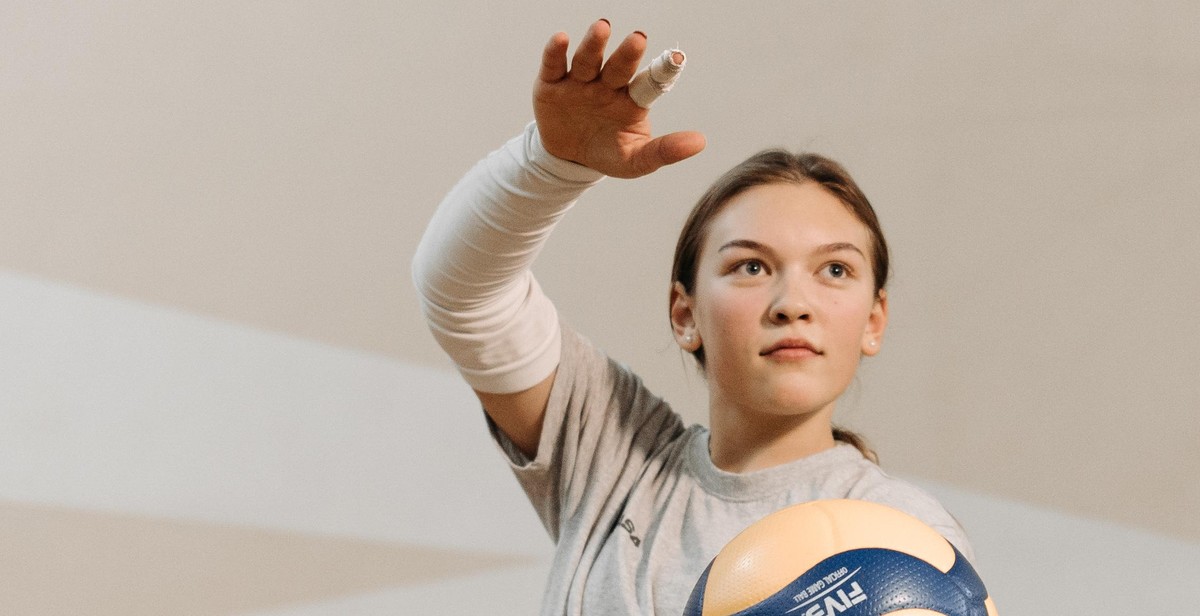How to Volleyball Dive Roll: Techniques and Practices for Executing Dive Rolls
As a professional volleyball player with over a decade of experience, I can attest to the importance of mastering the dive roll technique. The dive roll is a crucial skill that can help you save a point, avoid injury, and impress your teammates and opponents alike. However, executing a dive roll requires a combination of physical and mental preparation, as well as proper technique and practice.
What is a Volleyball Dive Roll?
A volleyball dive roll is a defensive maneuver used to save a ball that is low and out of reach. The dive roll involves diving forward and rolling onto the ground to make contact with the ball with one or both hands, and then immediately getting back up to continue playing. This technique is commonly used in both indoor and beach volleyball.
Why is the Volleyball Dive Roll Important?
The dive roll is important because it allows players to save points that would otherwise be lost. Additionally, it can help prevent injury by allowing players to safely dive for the ball without landing on hard surfaces. Lastly, executing a dive roll can show your teammates and opponents that you are a skilled and dedicated player who is willing to do whatever it takes to win.
Techniques and Practices for Executing Dive Rolls
In this article, I will be sharing my personal experience and tips for mastering the dive roll technique. We will cover the physical and mental preparation required, the proper technique for executing a dive roll, and the drills and practices you can do to improve your skills.

Why Volleyball Dive Roll is Important?
Volleyball is a fast-paced game that requires players to be quick, agile, and flexible. One of the essential skills that a player must possess is the ability to dive roll. This technique involves diving to the ground to save the ball and rolling over to get back up quickly. Here are some reasons why the volleyball dive roll is essential:
Prevents Injuries
Diving for a ball without proper technique can result in injuries like bruises, scrapes, and sprains. With the dive roll, you can reduce the impact of hitting the ground and minimize the chances of getting hurt. The rolling motion helps distribute the force of the fall, preventing any single area from taking the full impact. Moreover, the dive roll technique teaches players to land correctly, reducing the risk of injuries.
Covers More Ground
The dive roll allows players to cover more ground and reach for balls that are out of their reach. By diving, players can extend their reach and make saves that they would not have been able to make otherwise. The roll also helps players get back on their feet quickly, allowing them to get back into the game and prepare for the next play.
Adds to Your Style
The dive roll is not just a practical technique; it also adds to your style as a player. It shows your commitment to the game and your willingness to go the extra mile to save the ball. A well-executed dive roll can also impress the crowd and intimidate your opponents.
In conclusion, the volleyball dive roll is an essential skill that every player must learn. It prevents injuries, covers more ground, and adds to your style as a player. With practice and proper technique, you can master this skill and take your game to the next level.

Techniques for Executing Dive Rolls
Executing a dive roll requires proper body positioning, approach, jump, and rolling technique. Here are some techniques to help you execute a successful dive roll:
Proper Body Positioning
Before executing a dive roll, ensure that your body is in the correct position. Ensure that your feet are shoulder-width apart and your knees are slightly bent. Your arms should be extended in front of you with your palms facing down. Keep your head up and your eyes focused on the ball.
Approach
The approach is crucial when executing a dive roll. Start by taking small steps towards the ball, accelerating as you get closer. Ensure that your steps are short and quick, and your body is low to the ground. Your last step should be longer than the others, and you should push off with your foot to gain momentum.
Jump and Dive
As you jump, ensure that your body is angled towards the direction you want to dive. Keep your arms extended in front of you and your eyes on the ball. As you dive, tuck your head in and roll onto your shoulder, keeping your arms extended. Keep your legs together and your toes pointed to avoid injury.
Rolling Technique
As you roll, ensure that you use your shoulder and upper back to absorb the impact. Keep your arms extended in front of you and push off the ground with your feet to gain momentum. Roll onto your opposite hip, keeping your head tucked in and your eyes on the ball. As you come out of the roll, ensure that you land on your feet and recover quickly.
- Ensure that your body is in the correct position before executing a dive roll
- Take small steps towards the ball and accelerate as you get closer
- Jump and dive towards the ball, keeping your body angled towards the direction you want to dive
- Roll onto your shoulder and use your upper back to absorb the impact
- Push off the ground with your feet and roll onto your opposite hip
- Land on your feet and recover quickly
By mastering these techniques, you can execute a successful dive roll and improve your volleyball game.

Practices for Perfecting the Volleyball Dive Roll
Executing a perfect volleyball dive roll requires practice, patience, and dedication. Here are some practices that can help you perfect your dive roll:
Warm-up Exercises
Before practicing your dive roll, it is essential to warm up your body to prevent injuries. Start with light jogging or jumping jacks to get your heart rate up. Then, perform some dynamic stretches that target your shoulders, arms, and legs. Some examples of warm-up exercises are:
- Arm circles
- Shoulder rolls
- Leg swings
- Lunges
- Squats
Practice with a Partner
Practicing your dive roll with a partner can help you improve your technique and coordination. Have your partner toss the ball to you, and then perform a dive roll to pass the ball back. This drill will help you get used to diving and rolling on the ground while maintaining control of the ball.
Drills to Improve Your Dive Roll
Here are some drills that can help you improve your dive roll:
| Drill | Description |
|---|---|
| Rolling and Recovering | Start by diving and rolling on the ground, then quickly get back on your feet and repeat the drill. This drill helps you practice recovering quickly after a dive roll. |
| High Dive Roll | Have someone toss the ball high above your head, and then perform a dive roll to catch the ball. This drill helps you get used to diving and rolling on the ground from a higher position. |
| Dive and Pass | Have a partner toss the ball to you, and then dive and roll to pass the ball back. This drill helps you practice your dive roll while maintaining control of the ball. |
Remember, perfecting your volleyball dive roll takes time and practice. Use these warm-up exercises, partner drills, and dive roll drills to improve your technique and become a better player.

Common Mistakes to Avoid While Executing Volleyball Dive Rolls
Executing a dive roll in volleyball requires focus, practice, and the right technique. However, even the most experienced players can make mistakes that can affect their performance and increase the risk of injury. Here are some common mistakes to avoid while executing volleyball dive rolls:
Poor Body Positioning
One of the most common mistakes players make while executing dive rolls is poor body positioning. This can lead to a lack of control and impact on landing, which can result in injury. Players should ensure that their body is well-balanced and aligned before diving. This includes keeping the head up, shoulders back, and knees slightly bent. Additionally, players should aim to dive with their arms outstretched and their hands positioned to absorb the impact of the dive.
Lack of Practice
Another mistake that players make while executing dive rolls is a lack of practice. Volleyball dive rolls require a lot of practice to get right, and players who do not practice enough may struggle to execute the technique correctly. Players should aim to practice regularly, focusing on their body positioning and technique. This will help them to develop muscle memory and improve their performance over time.
Incorrect Rolling Technique
Finally, players may make mistakes in their rolling technique while executing dive rolls. This can lead to a loss of control, which can increase the risk of injury. Players should aim to roll diagonally across their body, with their head and shoulders leading the way. Additionally, players should aim to roll onto their side, rather than their back, as this will help to absorb the impact of the dive.
By avoiding these common mistakes, players can improve their performance and reduce the risk of injury while executing volleyball dive rolls.

Conclusion
Mastering the volleyball dive roll is a skill that requires time, dedication, and practice. With the right techniques and practices, you can execute a dive roll flawlessly and improve your performance on the court. Remember to always prioritize safety and start with the basics before progressing to more advanced techniques.
Tips for Successful Volleyball Dive Rolls
- Ensure proper body positioning before executing a dive roll.
- Practice with a partner to get used to the motion and build confidence.
- Start with basic techniques before progressing to more advanced ones.
- Always prioritize safety and wear protective gear when necessary.
Benefits of Volleyball Dive Rolls
Mastering the volleyball dive roll can benefit your game in a number of ways. Some of these benefits include:
- Improved defensive skills
- Increased agility and coordination
- Enhanced reaction time
- Reduced risk of injury
In conclusion, learning how to execute a volleyball dive roll is a valuable skill that can enhance your performance on the court. With the right techniques, practices, and mindset, you can master this skill and take your game to the next level.
